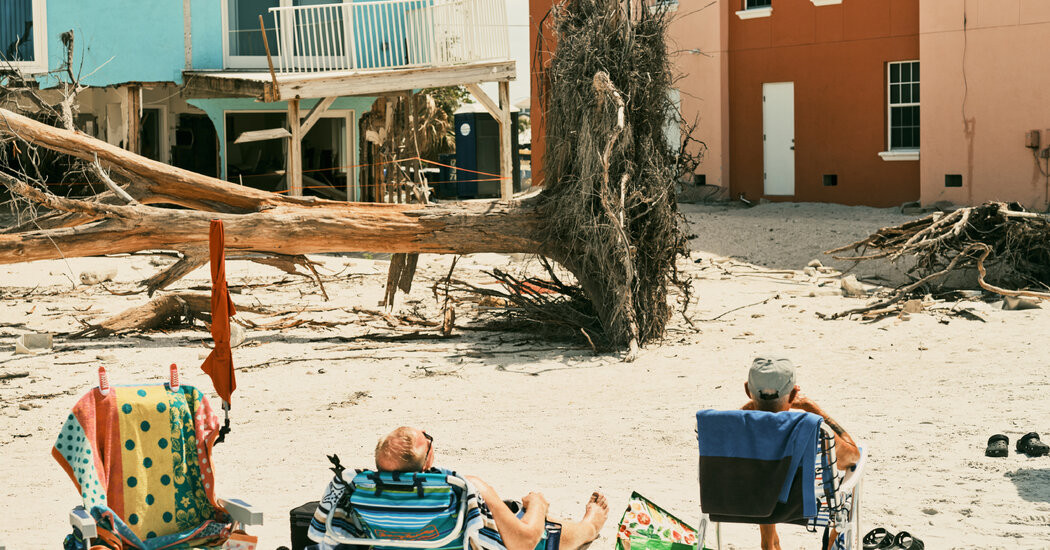

Some cities discourage spring breakers, but towns along the Gulf Coast, where every dollar is crucial after Hurricanes Helene and Milton, were eager for an influx.
In the beach towns west of Tampa, Fla., the message was clear for any spring breaker passing through. It appeared on chalkboard signs, waving inflatables and posters: We are open.
Spring break season is fraught in some parts of Florida, where the raucous behavior of certain visitors can outweigh their economic benefit. Miami Beach has been on a yearslong campaign to deter the college crowd, including with an ad this year for a fake reality show in which partyers break the rules and suffer consequences.
But for the businesses and the restaurants along the Gulf of Mexico that were ravaged by Hurricanes Helene and Milton last year, welcoming spring breakers — and anyone else, really — has been imperative. Some are still in temporary setups, or barely weeks into reopening, so every dollar is crucial. Many had anxiously anticipated the season, which began in early March and will wrap up in the next week or so, as a barometer for post-hurricane success.
There are other pressures on Florida’s retail and tourism industries: Inflation and the threat of punitive tariffs have rattled the American economy. But in the Tampa-St. Petersburg region, few can remember a hurricane season as disruptive as last year’s, when Hurricanes Helene and Milton delivered a one-two punch just 13 days apart.
Some businesses and hotels remain closed, and local governments have been swamped with post-storm requests for building permits; many have expedited the process by waiving fees or setting up temporary remote sites to process claims. More than 8,000 emergency rebuilding permits have been issued in St. Petersburg alone, for an estimated $150 million in construction value.